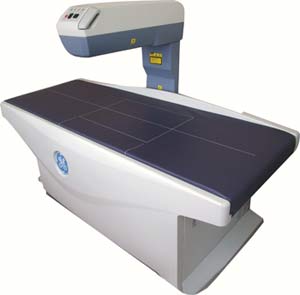
DEXA Scan
Osteoporosis is a condition wherein gradual loss of calcium causes the bones to become thin, fragile and more likely to break. It mostly affects women after menopause, but could also affect men. It is estimated that 36 million Indians are suffering from osteoporosis. One of the best ways to detect your risk of osteoporosis is to go for regular bone density tests and scans. We, at Apollo Clinic, constantly stress on the role of preventive tests and check-ups to ensure that your bone health is optimum.
What is a DEXA scan used for?
DEXA (Dual-energy X-ray Absorptiometry) is an improved form of x-ray technology that helps in the accurate detection of osteoporosis. It can also be used to assess your risk for developing fractures. Today, DEXA bone densitometry is the established standard to measure bone mineral density (BMD). DEXA is generally used to measure the hips and lower spine, but can also be used for screening the wrist, heel or fingers. In certain cases, the whole body DEXA scan may also be suggested.
Dexa scan is used to test bone density to check the strength of your bones. DEXA is known as Dual X-Ray Absorptiometry and is the most effective method to diagnose osteoporosis. The DEXA scanning can be done in two areas, the hip and the spine. It also focuses on the forearm. It helps doctors to detect fractures of the bone. The scan can be completed within 10-20 minutes. The process is painless, and the radiation from the scan is very low. It is similar to an X-Ray, and the patient has to lie on a table, and the scanner passes through the body.